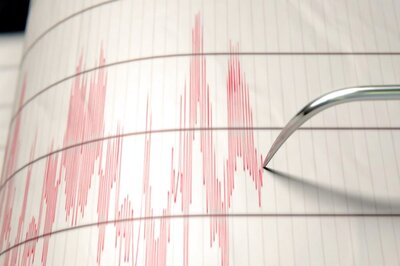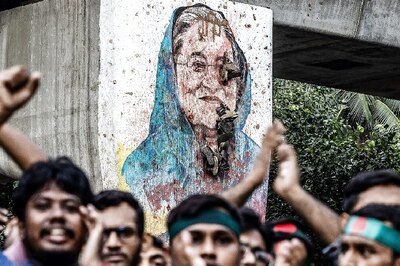
views
New Delhi: The Archaeological Survey of India (ASI)’s 2003 report on Ayodhya had made a case for a large structure pre-existing the Babri Masjid.
The observations were based on large pillar bases found at the time of the excavations. In 2003, excavations were carried out at the disputed site at the directions of the Lucknow bench of the Allahabad High Court Uttar Pradesh.
While delivering its verdict on the Ram Janmabhoomi-Babri Masjid case, a five-judge Constitution bench of the Supreme Court said the underlying structure was not an Islamic one and the fact that there lied a temple beneath the destroyed structure has been established by the ASI.
The court further said that terming the archaeological evidence as merely an opinion would be a great disservice to the ASI.
Archaeologist BR Mani associated with the task at the time said there were large pillar bases found standing at equal spans.
“The bases pointed out at the large structure pre-existing the mosque. These facts prove the enormity of the pre-existing structure found below the mosque. The pillar bases were found to be running parallel in two rows and in north-south direction. A wall is superimposed upon another wall. The superimposition shows that there was demolition and reconstruction.”
Key findings of the excavations were stone, sculptors and architectural elements. Mani claimed to have found 50 pillar bases during the excavation.
On June 11, 2003, the ASI issued an interim report that only listed the findings of the period between May 22 and June 1, 2003. In August 2003, the ASI submitted a 574-page report before the court that suggested a chronology through different periods.
Mani said, “The report had mentioned different eras through which we drew the chronological sequence of the site. It was the first excavation in Ayodhya where the chronology of the Northern Black Polished Ware (NBPW) culture was found to be between 1,200 and 1,500 BC.”
According to the report, the different archeological levels found at the site were as follows:
1,000 BC to 300 BC: The findings suggest a NBPW culture existed at the mosque site between 1,000 BC and 300 BC. There were figurines of female deities with archaic features, beads of terracotta and glass, wheels and fragments of votive tanks.
200 BC or Shunga Period: Archeologists found figurines of females and animals in terracotta. There were beads, hairpins, pottery, including black slipped, red and grey wares, and structures of stone and brick associated with the Shunga period.
100-300 AD or Kushan Period: Terracotta figurines of humans and animals and other fragments of votive tanks, beads, bangle fragments, ceramics with red ware and large-sized structures running into 22 courses were found from this level.
320-600 AD or Gupta and post-Gupta era: Typical terracotta figurines and other materials associated with the era like copper coins with the legend Chandragupta and illustrative potsherds of the Gupta period were found. The archaeologists also found a brick shrine with an entrance from the east and a provision for a water chute on the northern wall.
11th-12th Century: At this level, a massive structure was found. A few of the 50 pillar bases found belonged to this level.




















Comments
0 comment